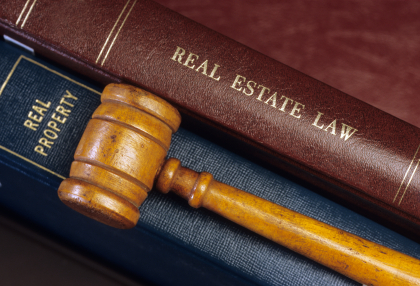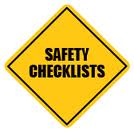A television studio client of ours faced a flooring problem in a recently acquired turn of the century building (the one before last). How do you take a rough, rotted, timber plank floor and make it level and smooth suitable for television cameras and pedestals to glide easily on? The photo above depicts a typical smooth studio floor (photo credit: Ronacrete).
Television and film stages are unique in that floors have to be hard enough and dent resistant so the weight and constant use of sets, equipment, ladders, scissor lifts, audience risers and audiences, lighting trusses and day to-day demands of carpenters don’t cause the floor bonding to sink in. They must be smooth so the wheels of a camera pedestal will glide or truck around smoothly without bumps, dents and vibrations that would cause the camera lens to shake. Camera “dollies” or “pedestals” in TV and production studios need floors that are seamless and super-flat simply because cameras must track smoothly during taping or filming. They also need some acoustical value to mitigate sound transmission in what should be a quite box.
I was general manager of NYC television studio and faced similar flooring challenges. One 3,600 sq ft stage had resin over vinyl tile and the tile warped causing the top coat resin to buckle. This video http://www.youtube.com/watch?v=72IITaox0FE shows a similar situation where the studio floor disintegrated in spots. The problem here was over coat disbondment. The solution was to remove the existing surface and resurface with epoxy build system and coated with high definition chemical resistant coating.
There are several solutions that studios deploy that were discussed in a LinkedIn discussion group.
1. Double overlayed plywood floors floated on a hard foam base.
2. Plywood and gypsum sandwiched floors.
3. Concrete can be used but of course the weight becomes an issue. A structural engineer should be consulted to calculate the load and approve its use.
4. Topping the wood with self-leveling resin that is super tough on a busy TV studio floor is the most popular solution.
Ardex makes self-leveling portland based concrete toppings that are often specified for TV studios. K-500 can be applied 1/4 inch to 1 1/2 in thick and can be tapered down to 1/16 inch for thresholds. Mixed with pea gravel it can go up to 5 inches thick. K-500 can be coated with a quality floor paint/sealer (see recommendations) in 24+ hours. SD-T is the “fast track” version and can be applied 1/4 inch to 2 inches thick. SD-T can be coated with recommended floor paint in about 2 to 4 hours. Prep, prime and let dry, pour the topping and let it cure, then cover with appropriate floor paint.
Each new studio set may potentially require floor repainting so the floor screed must be able to withstand this constant paint application and removal. A good high chemical resistance paint should be applied for this purpose.
To reduce the noise in a studio floor, an EVA rubber floor underlayment can be used to mitigate noise transmission if you aren’t using big pneumatic pedestals. EVA stands for ethylene vinyl acetate. It’s a plastic foam material and does not actually contain any rubber. This material is also known as acetate.
Another option is TV Tiles which are made in large 36 inch squares that provide a flat, smooth floor for television studios.
What have you used?
Discover more from Helping NYC & Long Island Commercial Tenants, Owners, and Developers
Subscribe to get the latest posts sent to your email.






How about having a Virtual Studio Set… One would not have to go through the hassles of redoing the sets every time a program changes. And one could create a set at the click of a mouse or a button…
Chris, the same flooring principals would still apply to virtual sets. Virtual ses utilize green screen/chroma technology to display the backgrounds and floors are often painted with chrmoa key green paint. Sensors can track camera movement, so as cameras truck across the floor the software changes the electronic set angles and perspectives with the move. Since virtual sets can be used with trucking pedestals, proper floor prep is still necessary even in the electronic set environment.
You should look into lightweight concrete. Lightweight concrete consists of concrete, sand and foam that is mixed together. This flooring can be self leveling if mixed correctly. But for studio use you should have it laser leveled and polished prior to epoxy paint finishing. This lightweight flooring depending on mixture can handle the abuse of a production studio.
The LITEBUILT® Aerated Lightweight Concrete process is based on the principle of entrapping a multitude of air bubbles in the concrete mix, who retain their structure during the curing period. Firstly, the mix composition of cement / sand / water / foam according to specification has to be chosen. After batching the basic ingredients, LITEBUILT® Foaming Agent is introduced to the mix which then can be poured into panel molds of virtually any shape or size. The LITEBUILT® Aerated Lightweight Concrete Mix normally cures in open air within about 24 hours (unless it is used in cold weather conditions) before handling is recommended. It is possible to add other products to the LITEBUILT® Foam Mix to obtain lightweight composite concrete. Notably the use of various fibers increases the strength of the product and prevents cracking in adverse conditions.
Density 300-600 kg/m³ (19-38 lbs/ft³) Made with Cement & Foam Only Density 600-900 kg/m³ (38-56 lbs/ft³) Made with Sand, Cement & Foam
Density 900-1200 kg/m³ (56-75 lbs/ft³) Made with Sand,Cement & Foam
Density 1200-1600 kg/m³ (75-100 lbs/ft³) Made with Sand, Cement & Foam
NON-STRUCTURAL APPLICATIONS
Roof / Floor Grading
LITEBUILT® Aerated Lightweight Concrete is also recognized as a cost effective way to rehabilitate old floors (i.e. multi- storey buildings that have wooden floors) which require a lightweight self leveling compound.
This company that published these specs above is in Australia. I’m sure if you contact your local cement supplier he would be more then willing to steer you in the right direction.
Sincerely
Bill
Thanks for the info Bill. I checked their site and it appears they are a global company with a presence in the US as well.